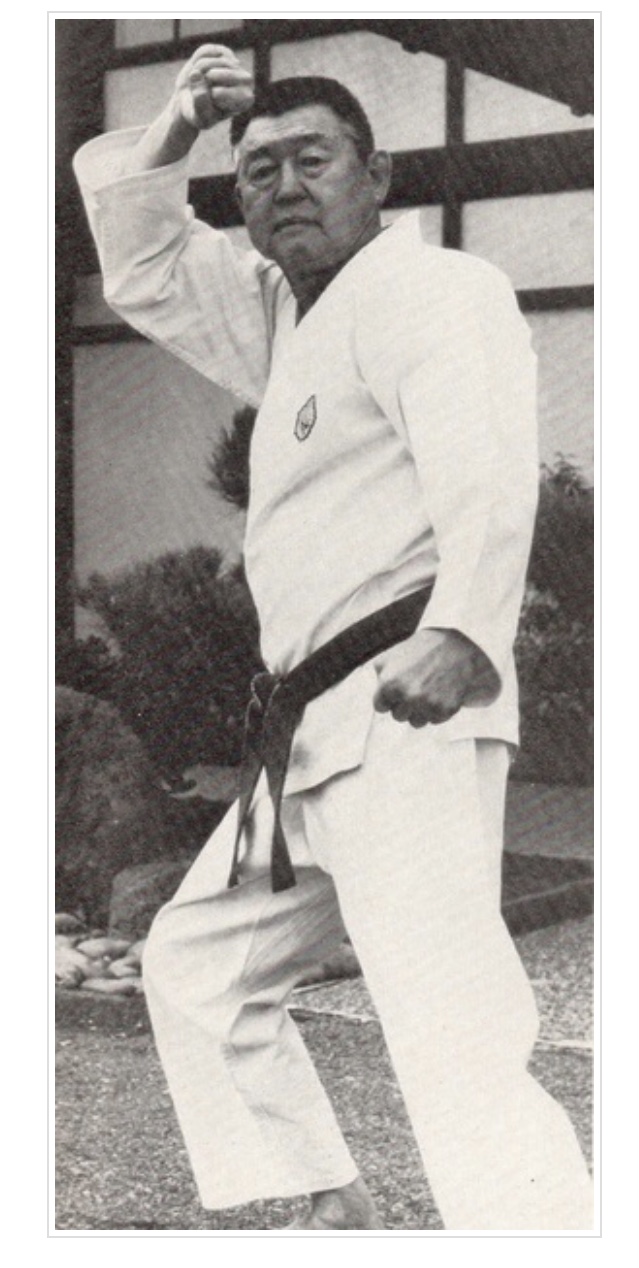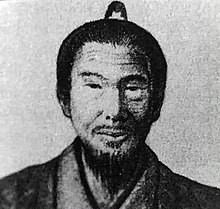History of Shorinji-Ryu Karate

The World Budo Alliance present the History of Shorinji-Ryu Karate. Firstly, Shorinji-Ryu Karate is a powerful martial art! And with its origins traced back from Okinawa to the Shaolin Temple. Also contrary to many modern Karate systems that use muscular tension and external strength, this one focuses on the idea of soft technique. Which today is considered to be a "soft art". Most of all this means it uses Ki or Chi for its power.
Secondly Shorinji-Ryu Karate was refined into very complete, well rounded fighting art. Therefore, Shorinji-Ryu Karate maintains its fighting prowess, discipline. And also its elegance through an intensive training curriculum. Thus combined with the approach of adaptability and innovation as its principals. Hence this fully trains the practitioner to be a well-rounded martial artist.
Bodhidharma connection
Most of all today, it has become traditional to trace the origins of karatedo to the Indian Buddhist monk Bodhidharma. He is said to have been a member of the Kshatriya or warrior caste. Hence trained in martial arts as a young man before becoming a missionary. After an arduous journey, Bodhidharma arrived in north China in 520 and entered the monastery of the Shaolin Temple (少林寺, Shorinji in Japanese). What he found there was very upsetting to him.
And Bodhidharma's spiritual practices centered around "zazen" or seated meditation. Therefore so strong was his discipline that he is said to have sat gazing at a wall for nine years. Finding the monks of Shaolin too weak and lethargic to endure his regimen, Bodhidharma taught them a set of breathing and conditioning exercises. While the monks spent all of their time in spiritual training ignoring physical training. Therefore their general health was very poor.
Very importantly what was taught to the monks were derived from Bodhidharma's own martial arts training. And these exercises are said to have formed the basis of the fighting arts known as Shaolin Quan Fa (拳法, Kosho Shorie Ryu Kempo).
History of Shorinji-Ryu Karate
So the legends of Shaolin have become a touchstone for the rich and complex history of Chinese martial arts. As especially as they refer to Shorinji Ryu. Plus they are perhaps best understood to be an acknowledgement of the depth and power of Chinese martial traditions. As were adapted and evolved by the parents of karatedo the people of Ryukyu (Okinawa).
Ryukyu is a chain of islands situated between China, Japan, and southeast Asia. Important is that the Ryukyu for much of its history has been a maritime nation. Thus central to the exchange of goods, technology, and cultural practices throughout the region. At least as early as the Tang dynasty (618-906), Ryukyu had strong economic and political ties to China.
And with frequent exchanges of diplomats, tradesmen, and travelers came an equally powerful influence on the islanders was Japan. And especially following the 1609 invasion by the Satsuma. In the period that followed, Okinawan's were in the uneasy position of being nominal vassals of both China and Japan. This difficult and dynamic situation created a fertile soil for the blossoming of martial arts.
Shorinji-Ryu Karate

A distinctively Okinawan fighting system emerged, known as "tode," later called "te, okinawate," or karate. And the original kanji for karate, 唐手 "china hand," indicate its roots in Chinese traditions.
Many stories tell of Chinese martial artists coming to Okinawa and Okinawans training in China. And the most famous of these being Sakugawa, a resident of the town of Shuri. Of whom is said to have traveled to China circa 1724 to deepen his knowledge of martial arts.
Known for his mastery as Karate Sakugawa became famous as a teacher. Therefore is claimed by many modern systems of karatedo as a progenitor. The formal name of our style, Sakugawa Koshiki Shorinji-Ryu Karatedo. Which reflects both its orthodox transmission of Sakugawa's techniques and its descent from the Shaolin arts. From Sakugawa. It said to inherit the kata Kanku Dai and Sakugawa no Kon and the philosophy of the Dojo Kun.
History of Shorinji-Ryu Karate
The Meiji Restoration that launched Japan on a path of modernization and nationalism. Which swept the people of Okinawa in its wake, with Ryukyu officially becoming Okinawa Prefecture in 1879. As Okinawan education and military service became increasingly organized along Western lines. Causing knowledge of karatedo became more widespread, and its public instruction was encouraged.
These social changes transformed karatedo from a closely-held art, practiced only by a few, to a discipline that was taught and discussed in the public sphere. Sakugawa's student "Bushi" Matsumurawas a key transitional figure who served as a security specialist for the Okinawan royal family until his retirement.
And this is when he began to conduct karatedo classes at Shuri. Not long after his death in 1899, his students Anko Itosu and Chomo Hanashiro were teaching their karatedo in the public schools of Shuri. Also publishing articles about it, and participating in colloquia with scholars and teachers of other styles. During this period karatedo was strongly influenced by the austere culture of Japanese budo. And especially as reflected in modern disciplines such as Kendo and judo; from these it gained the organizational frameworks of group training and grading.
Origins of Shorinji Ryu
As Shorin is the Japanese form of "Shaolin", so Shorinji is the Japanese version of "Shaolin-tzu", a tribute to the Shaolin temple in China. Due to the generic nature of the name, five styles with that name exist.
Although three of the styles named Shorinji Ryu owe their origins to students of Chotoku Kyan, these five styles are no more closely related to one another than they are to styles with totally different names. Only one of these styles, Japanese Shorinji Ryu. So, to outline the five styles that all happened to be named Shorinji Ryu:
Okinawan Shorinji Ryu
Founded by Joen Nakazato (1922-present) who based it directly on the teachings of Chotoku Kyan and preserves the original Shuri-te katas.
According to Nakazato Jōen’s tradition, the fifth-generation ancestor from Chinen village Shikiya. Nakazato Hitohisa who had was called “Shikiya no Naka” (yagō=a name to identify individuals otherwise difficult to identify), was widely known as a master of bōjutsu. Even today, his skill of “Shikiyanaka no Kon” is highly evaluated by people who are enthusiastic about this field of study.
Shikiyanaka is said to have had a liking for martial arts (bugei) since his childhood. Therefore he constantly trained and studied. And sometimes he spent a dozen or so days secluding himself in the mountains praying to God and eating rice and studying bōjutsu. As a result of such rigorous training, he created his own stick technique, the so-called ” Shikiyanaka no Kon.” His stick art is characterized by its flexibility, freedom and variety, by “nukite,” “tsuki-te,” and “ura-uchi,” and an emnbusen reminiscent of a single path of a thin rice field ridge.
Continues...
Recognized for his excellent martial arts and his mild-mannered personality, he served in government service at the Sueyoshi Dunchi. Known not to be arrogant, he was respected by his peers. And he was especially favored by his master. And whom he always accompanied when he was dispatched to China and Japan as an ambassador of the royal government of Ryūkyū. Therefore it is said that he was assigned as a bodyguard and successfully fulfilled his duties. In addition, it is said that he taught Bōjutsu to his master while serving the Sueyoshi Dunchi.
Inspired by him, Bōjutsu became popular in the Shikiyanaka hamlet. And before the WWII it boasted of unique martial arts tradition such as the four-man “Danna bō,” the two-man “Kumi bō,” “Yari no Te,” “Shaku no Te.” Plus each year during Yōkabī festival on August 11th, a lot of village people gathered with bō at the “dono (palace)” of god of fire is enshrined.
Thereby they praised the achievements of “Shikiyanaka Bushi” and listened to the story of the elders. The fact that the “Shikiyanaka no Kon” is now popularized by the Shikiyanaka Preservation Society is significant from the viewpoint of protecting cultural properties.
Shorinji Ryu Renshinkan
Founded by Isamu Tamotsu (1920-present) who places more emphasis on fighting plus more kicking, evasive techniques. And it also has higher stances than other styles.
Renshinkan was born in Kagoshima, Japan. It's founder, Isamu Tamotsu, began 64 years ago, and faced many hardships. "We must acknowledge that our present achievements are only possible because of the selflessness of our forefathers" (Soke's Message, 2010, Second International Friendship Karate-do Tournament). Renshinkan is based on a spirit of personal development and character building that is currently practiced in 19 countries world-wide.
Renshinkan Karate-do has implemented a code of respecting human life. In which is shown by the practice of holding safe and practical competitions and insisting on always using protective gear. Since the early stages, it has focused on character-building. Thus it has devoted all of its energy into the "formation of human-beings through Karate-do". Under the philosophy of "Educate people looking ahead to the next 100 years", Renshinkan's principles of teaching have not only emphasized the mastery of Budo, but have also strive to form character, fulfill spirits, and cultivate morals.
Renshinkan's main focus is to physically and mentally nourish young students, as well as to create genuine Karate-do.
Shorinji Ryu Kenkokan
Founded by Kori Histaka (1907-1988) in 1945, it combines the teachings of Chotoku Kyan with various Chinese influences (including Chinese Shorinji Kempo). Japanese Shorinji Kempo (also registered as a Japanese religion) was founded by Hisataka's student Doshin So (1911-present) in 1946 and is related only distantly to any form of karate.
Sakugawa Koshiki Shorinji Ryu
This style attempts to preserve the original katas of Sakugawa. Of which he learnt in China, hence "Sakugawa Orthodox (koshiki) Shaolin-tzu (shorinji) Style (ryu)". It was brought over to the United States in 1969.
Japanese Shorinji Ryu
Richard Kim (1917-present) brought this style to North America and began teaching in San Francisco, California in 1959, but its origin is rather cloudy.
As you can see the History of Shorinji-Ryu Karate is very rich and complex. I have provided as many links as possible to names to help sort this information out. And also to make things more readable.
Researched by Sensei Kara Borshuk
Edited by Grand Master Art Mason